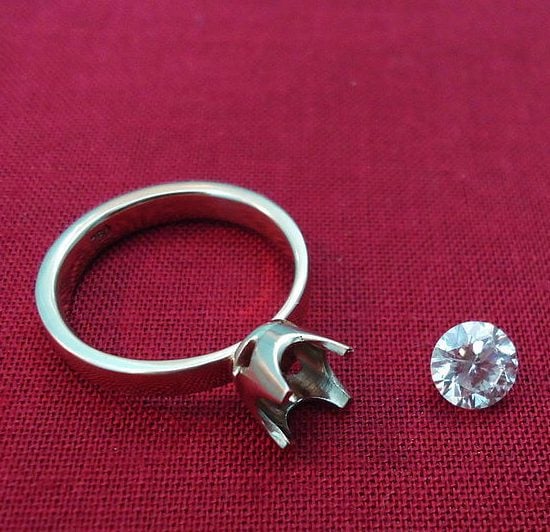How to Evaluate Diamond Symmetry
How can you evaluate diamond symmetry without an expensive proportion scope? Learn how to build an inexpensive alternative tool that will get the job done.
2 Minute Read
Fortunately, there's an effective, alternative tool you can use. I'll show you how to build it yourself.
An Inexpensive Solution
During the 1970s, Dr. Kazumi Okuda created an alternative to the proportion scope. He utilized a 10X magnifying glass and a reflector of colored plastic (red, reddish, or orange color). This idea is based on a simple principle, illustrated in Figure 1.
The interior of the plastic reflector reflects light from a lamp to the diamond. The gem reflects that light, now red or reddish, with either a perfect or imperfect shape, depending on the diamond's cut and proportions.
Interested in this topic?
This article is also a part of our Diamond Specialist Certification Course, in the unit Diamond Grading Tools.
If the diamond is perfect, the observed image will be identical to Figure 2.
If the plastic reflector is red, the red zones mean a perfect return of the light. The white zones indicate a leak of the light, which means a flaw in the proportions. The triangular black forms allow you to evaluate the symmetry. A pink (not red) color indicates a partial return of the light, which means a minor flaw in the symmetry. Observe the flaws in Figure 3.
You should classify the example above as "Poor," assuming symmetry categories of "Excellent," "Very Good," "Good," "Fair," and "Poor."
How to Test Mounted and Loose Diamonds
The position of the light depends on whether the diamond is loose or mounted. If loose, orient the light directly behind it. If mounted, use incandescent light coming from above (as in Figure 1), reflected — never direct — by a piece of white paper. With some practice, an aspiring gemologist can determine the optimal type of illumination.
A Do-It-Yourself Way to Measure Diamond Symmetry
If you have a triplet lens laying about unused, you can build one of these tools easily. For a reflector, choose a tubular piece of any red plastic with a flat interior surface that reflects light well. (I successfully used a red cover of WD-40 lubricant. See Figure 4). The ideal material shouldn't be totally opaque. Your tubular piece can have a constant diameter or an enlarged one like a funnel. The only assembly to be done is uniting the piece of plastic to the lens. Remember that cyanoacrylate glues don't mix with optic parts.
For the area between the lenses and the cover, use any cylindrical piece of material on hand. (You could also ask a machinist to create an aluminum cylinder). In the closed part of the cover, cleanly cut a circular hole 6 mm in diameter exactly at the center. This size diameter will allow you to fully see diamonds up to 1 carat. You can see how the lens and cylinder go together in Figures 5 and 6 below.
Remember, the opening of the red reflector should be at the focal point of the lenses. If you're unsure about this, just focus the image from a lamp with the lens over a piece of paper. With the image at its minimum, carefully measure the distance between the lens and the paper.
For very accurate diamond symmetry measurements, you can use a filar micrometer with a goniometer. See Figure 7.
Dr. Raul Berenguel, PhD.
Dr. Raul Berenguel holds degrees in History (Scientific Branch, 2008) and Contemporary Art (PhD, 2012) from the Universidade Aberta. He has specific expertise in the fields of history, gemology, and contemporary art. In addition, he’s also an expert in applying traditional gemological techniques to investigating art objects made from gem materials.
Related Articles
Diamond Value, Price, and Jewelry Information
HPHT Diamond Treatments
Princess Cut Diamonds: The Ultimate Guide
What Customers Value Most in the Jewelry Insurance Buying Experience
Latest Articles
800 Years of Mogok: A Celebration in Tenuous Times
What is the Average Gemstone Faceting Yield?
Pyroxmangite Value, Price, and Jewelry Information
How to Identify Emerald Simulants and Synthetics
Never Stop Learning
When you join the IGS community, you get trusted diamond & gemstone information when you need it.
Get Gemology Insights
Get started with the International Gem Society’s free guide to gemstone identification. Join our weekly newsletter & get a free copy of the Gem ID Checklist!
